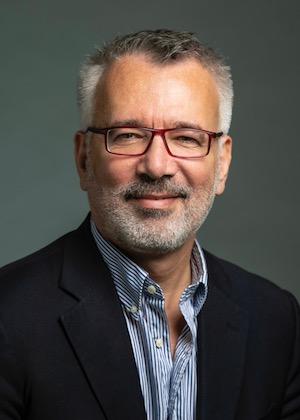Distinguished guests, scholars, colleagues, and peacebuilders,
I’m Alpaslan Ozerdem, Dean of the Jimmy and Rosalynn Carter School for Peace and Conflict Resolution. It is my great honor and pleasure to welcome you to our Carter Legacy Symposium to commemorate and celebrate President and Mrs. Carter’s outstanding contributions to making the world more peaceful and just.
As we come together today to delve into the profound legacy and impact of President Jimmy Carter and Mrs. Rosalynn Carter, we must first pause and cast our minds to recent events that have, once again, highlighted the fragility of peace in our world. The devastating renewal of the Israel-Palestine conflict, along with the heartrending situations in places like Ukraine, Yemen, Libya, Myanmar, Nagarno-Karabagh, Syria, Somalia, Mali, and the DRC, amongst others, paints a bleak picture. Civilians, often the most vulnerable among us—women and children—are left bearing the scars of war, both seen and unseen. Their lives, livelihoods, and human dignity hang in the balance. Let this silence resonate, reminding us of the fragility of peace, the cost of conflict, and the imperative call for conflict resolution and justice in our world.
In this present moment, we find ourselves standing at the crossroads of history. Peace, a concept that seems so innate to our human essence, is more endangered today than ever. These humanitarian crises and tragedies are a poignant reminder of the immense responsibility we bear. They remind us of the cost of conflict as senseless killings, displacement, dispossession, wanton destruction, and disintegration of trust and societal ties. They remind us of the imperative call for protecting civilians from violence and the need to heal their unbearable physical and psychological suffering and trauma. They remind us of the desperate cries for justness, human rights, and human security, no matter where they are needed and by whom. In this era of rapid technological advancements and unprecedented global connectivity, it is a somber reality that our divisions seem to be deepening, and the narratives of war are taking over our actions for governance and community relations. As a society, as a global community, we are faced with stark choices that carry profound implications for our shared future.
Yet, even in these dark times, rays of hope pierce through. Around the world, institutions, organizations, and dedicated individuals are diligently striving to care the fragile seeds of dialogue, cooperation, coexistence, and peace. Often, their fearless efforts go unnoticed, and their struggles are underfunded. Their peace infrastructure is under constant attack while every day, they witness the power of the military-industrial complex, proxy wars of geopolitics, and suffering of communities torn apart by physical, structural, and cultural violence. But make no mistake; their role in our shared global narrative is pivotal. They are the bastion against chaos, the remedy of wounds that run generations deep, and the bridge-builders in a fractured world.
The Jimmy and Rosalynn Carter School for Peace and Conflict Resolution are amid this backdrop.
The Carter name signifies more than just a legacy—it's a torch, a commitment, a promise. When we speak of President Jimmy Carter and Mrs. Rosalynn Carter, we speak of a relentless dedication to peace, a deep-rooted belief in the transformative power of dialogue, and an unwavering commitment to creating a more just, inclusive, and harmonious world. President Carter and Mrs. Carter have shown that peace isn't a mere idealistic dream but an active, relentless pursuit.
Peace is the greatest good, requiring courage, resilience, and an undying belief in humanity's ability to rise above its differences. President and Mrs. Carter urge us to ‘think for peace’, ‘act for peace’, and ‘be peace’.
The Carter School, shaped and inspired by this legacy, stands as a beacon in these turbulent times. It is a place where future peacemaking and peacebuilding leaders are nurtured, the instruments of conflict analysis and diplomacy are sharpened, and the seeds of peace take root and flourish.
Every student graduated, every dialogue facilitated, every research undertaken, and every partnership for peace launched echoes the Carters' vision—a world where conflicts are resolved not through force, but through negotiations; not through domination, but through mutual respect and justice.
As we gather today to celebrate this legacy, and in our collective journey toward peace, let us remember that we are not passive spectators. We need to see what’s happening in the world right now beyond the narratives of war, and we need to take sides with conflict resolution. We are the change-makers, the advocates, the champions of a world where justice, compassion, and peace prevail. We bear the weight of responsibility, but also the privilege of possibility. In the face of overwhelming adversity, the Carter legacy stands as a testament to our shared ability to forge a brighter, more harmonious future.
This symposium is more than a mere gathering; it is a call to action. It beckons us to remember our shared responsibilities and to celebrate the invincible spirit of President and Mrs. Carter. In their honor and for the sake of all humanity, let us recommit ourselves. Let us call upon every individual, organization, and nation join hands in this noble pursuit of conflict resolution, ensuring that tales of justice, compassion, and enduring peace define our shared history.

Alpaslan Özerdem, Dean of the Jimmy and Rosalynn Carter School for Peace and Conflict Resolution
